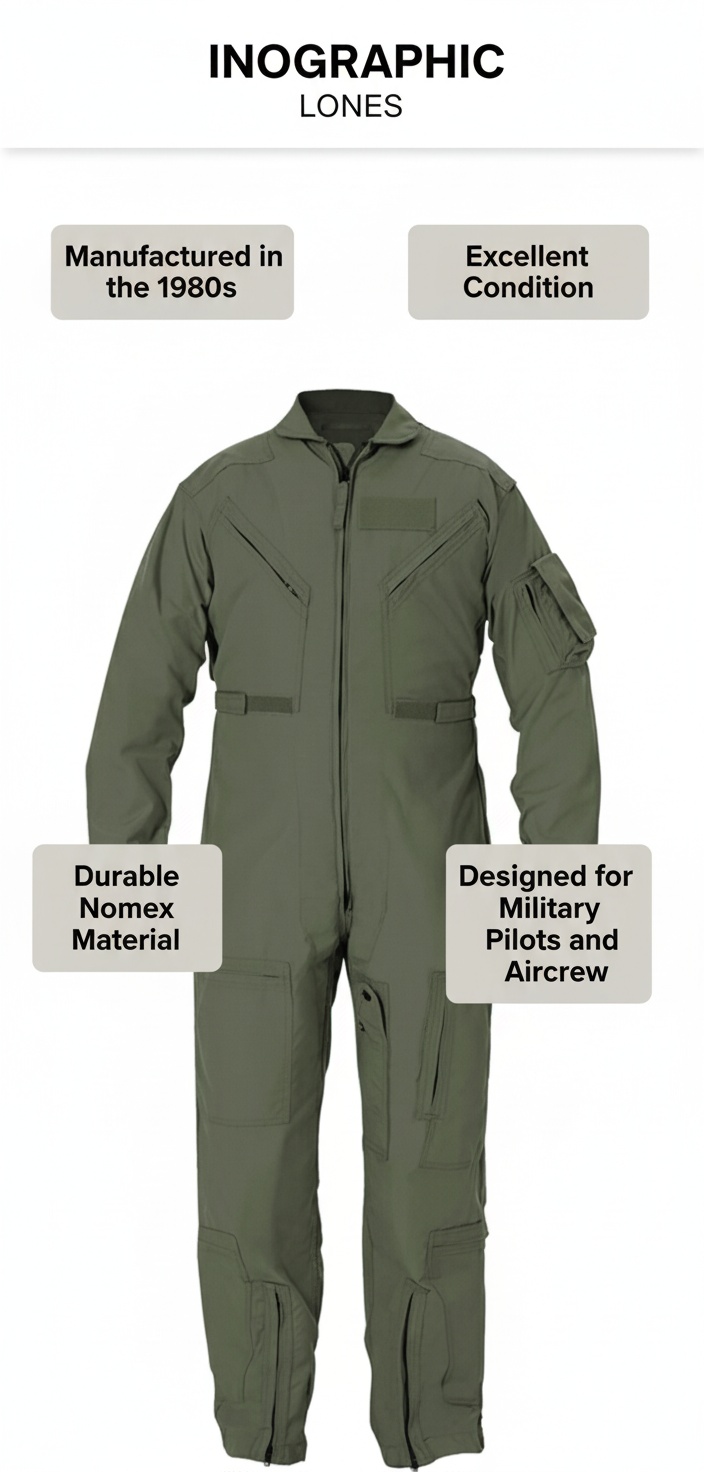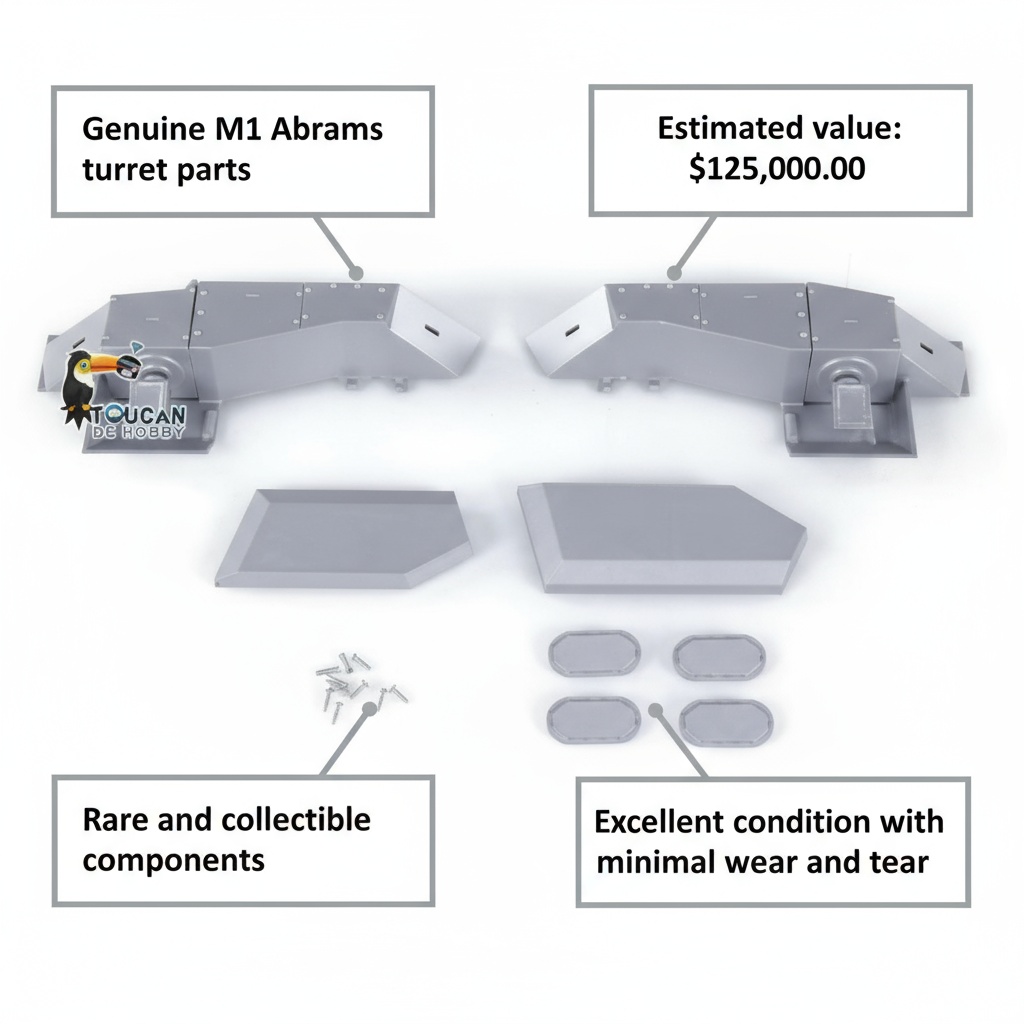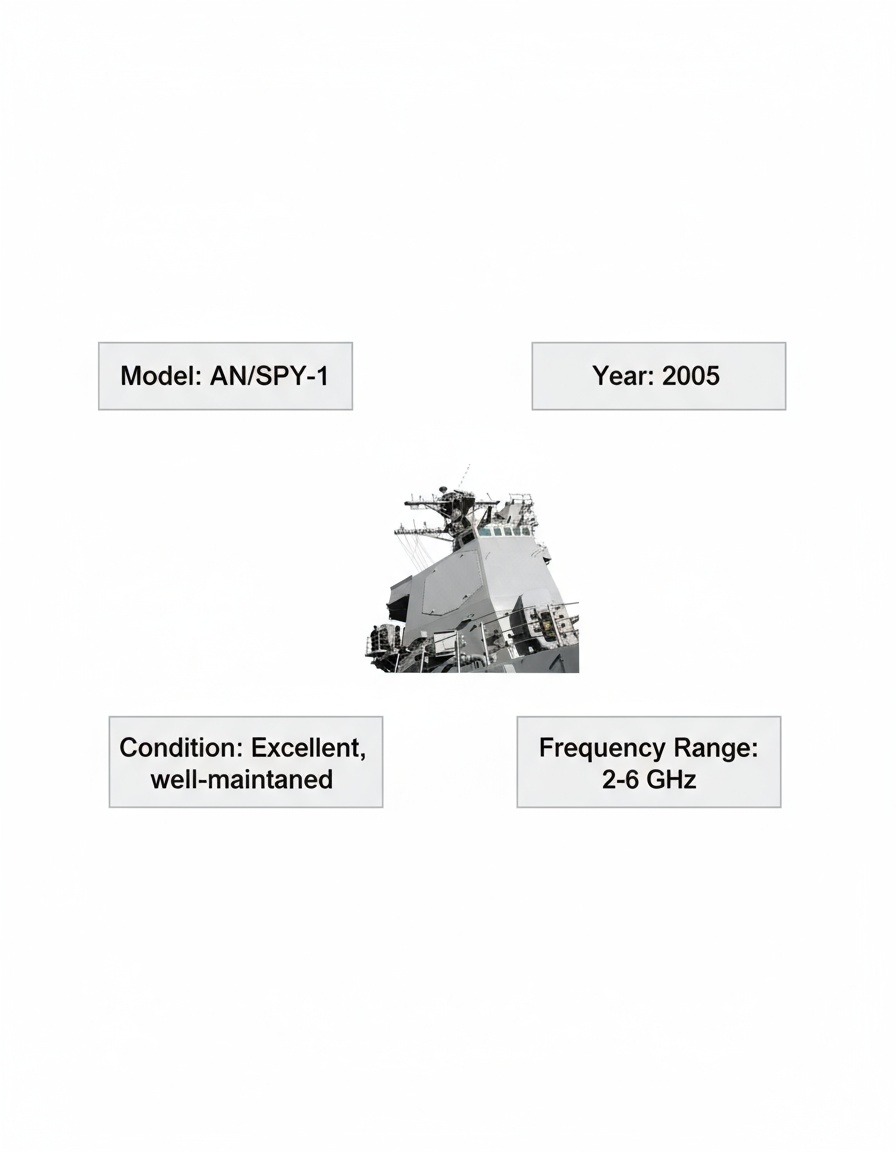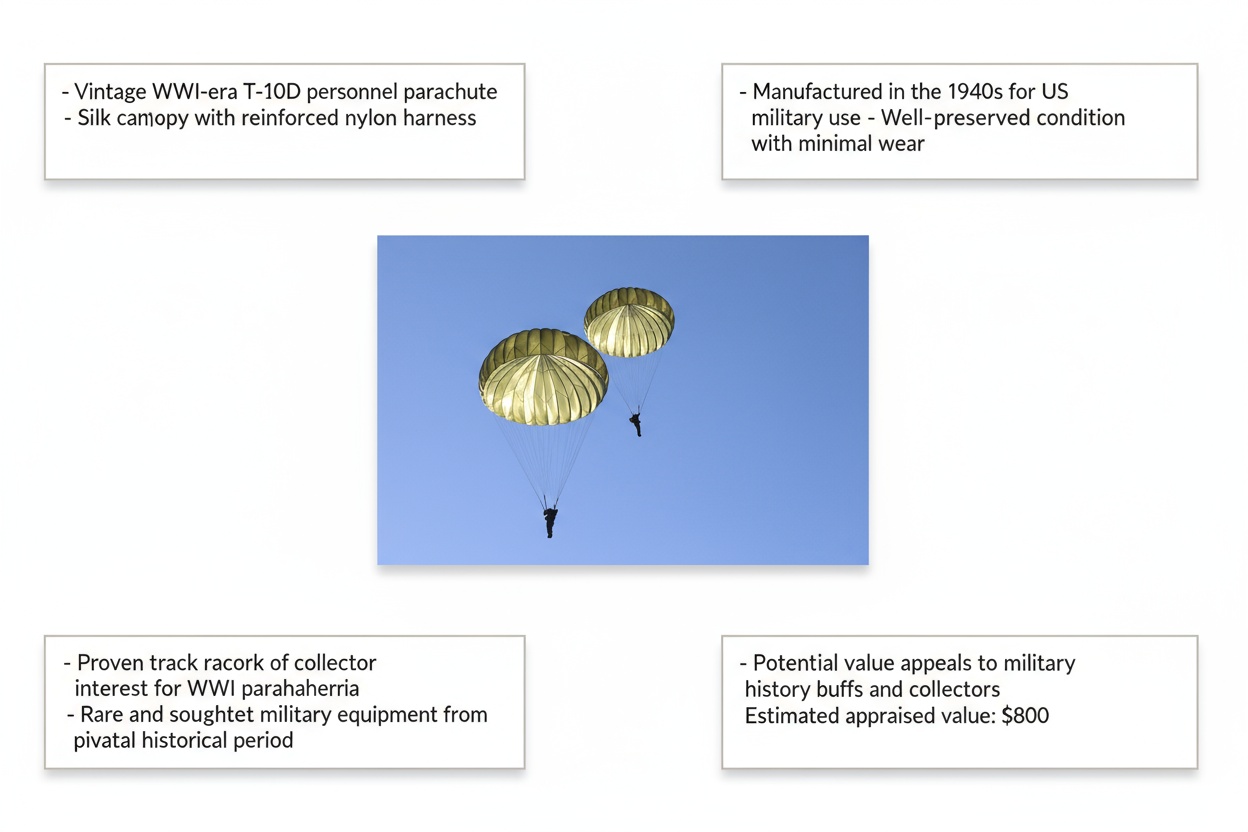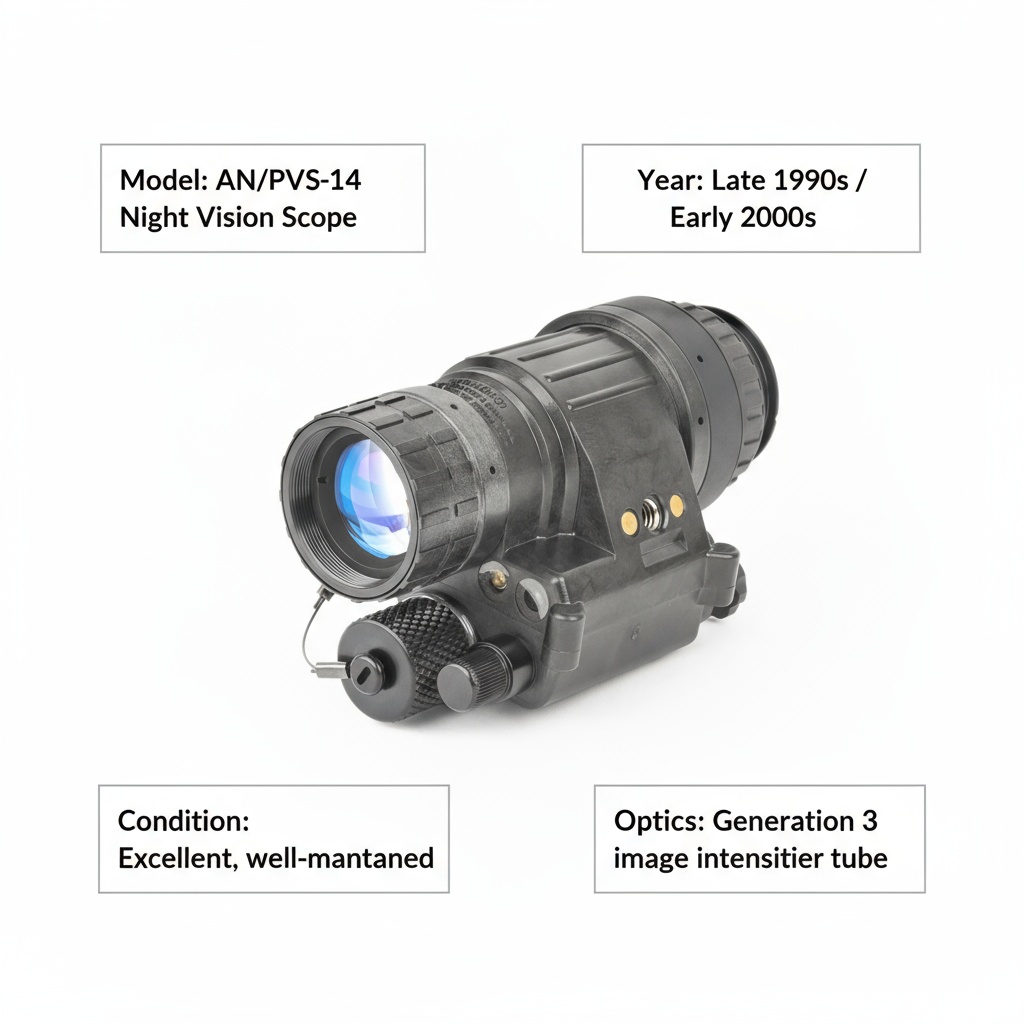<h2>Understanding the Nomex CWU-27/P Flight Suit Market</h2>
<p>The <strong>Nomex CWU-27/P flight suit</strong> is one of the most sought-after pieces of military aviation memorabilia today. If you own one—or are considering buying or selling—you're looking at an item shaped by specific market forces, condition factors, and historical significance. Getting a professional appraisal helps you understand exactly what your suit is worth and why, so you can make confident decisions whether you're listing it for sale, insuring it, or simply satisfying your curiosity.</p>
<h2>What Drives Nomex CWU-27/P Value and Market Demand?</h2>
<p>The market for Nomex flight suits is driven by a combination of collector interest, historical demand, and the suit's iconic status in aviation culture. A <strong>Nomex CWU-27/P</strong> manufactured in the 1980s is particularly desirable because it represents a specific era of military aviation and came equipped with superior heat and flame-resistant properties that made it standard issue for combat pilots and aircrew.</p>
<p>Several factors influence pricing:</p>
<ul>
<li><strong>Collector enthusiasm</strong>: Aviation memorabilia collectors actively seek original military garments, and the CWU-27/P is a flagship piece.</li>
<li><strong>Rarity and availability</strong>: Not all flight suits survive in good condition, and documented examples become more valuable over time.</li>
<li><strong>Condition and preservation</strong>: A suit in excellent condition with minimal wear commands significantly higher prices than one showing heavy use.</li>
<li><strong>Historical context</strong>: Suits with provenance tied to specific units, pilots, or deployments hold premium appeal.</li>
<li><strong>Material and construction</strong>: The durable Nomex material and original construction standards reassure buyers they're getting an authentic military-grade item.</li>
</ul>
<p>Current market estimates typically range from <strong>$350 to $450</strong> for well-preserved, standard examples. However, rare variants, heavily documented suits, or pieces with exceptional provenance can exceed these benchmarks considerably.</p>
<div class="callout tip"><p><strong>Pro Tip</strong></p>
<p>If you think your flight suit might be worth more than the typical range, look for unique markings, unit patches, or documented service history—these details matter more to serious collectors than you might expect.</p></div>
<h2>Authentication: Markings, Labels, and Date Codes</h2>
<p>One of the first things an appraiser examines is whether your <strong>CWU-27/P is authentic</strong>. Military garments are frequently reproduced, so knowing what to look for protects both your investment and your resale prospects.</p>
<h3>Key Authenticity Indicators</h3>
<ul>
<li><strong>Manufacturer tag</strong>: Look for the maker's name, contract number, and lot designation. Contracts from the 1980s are well-documented.</li>
<li><strong>NSN (National Stock Number)</strong>: This military identification number, if present, confirms government issue and can be cross-referenced with military procurement records.</li>
<li><strong>Flame-resistant Nomex label</strong>: The material tag should explicitly state "Nomex" and its protective properties.</li>
<li><strong>Date and size codes</strong>: Authentic suits include stitched or printed date codes that align with manufacturing timelines.</li>
<li><strong>Zipper markings</strong>: Original zippers often carry maker stamps. Check the zipper pull and surrounding stitching for consistency and wear patterns.</li>
<li><strong>Service tapes and stitching</strong>: Examine the quality and placement of service tapes on pockets and seams; inconsistencies can signal reproduction.</li>
</ul>
<p>When you submit your suit for appraisal, provide <strong>high-resolution photographs of all labels, tags, and markings</strong>. Close-up images of the manufacturer tag, zipper details, and any NSN or contract numbers will help the appraiser establish authenticity with confidence. For those interested in understanding how to accurately evaluate your personal property, our guide on <a href="https://appraiseItNow.com/blog/appraising-vintage-clothing-and-accessories-assessing-fashionable-investments">appraising vintage clothing and accessories</a> walks you through key evaluation steps.</p>
<h2>Condition Assessment and Its Impact on Value</h2>
<p>Condition is one of the most significant value drivers for a <strong>Nomex CWU-27/P flight suit</strong>. Small details that seem minor to the untrained eye can shift an appraisal by hundreds of dollars.</p>
<h3>How Wear Affects Pricing</h3>
<ul>
<li><strong>Minimal wear</strong>: Light surface creasing, faint stains, or a slightly faded appearance might reduce value by 10–15 percent.</li>
<li><strong>Moderate wear</strong>: Visible discoloration, small holes, or non-original patch repairs can decrease value by 25–40 percent.</li>
<li><strong>Significant damage</strong>: Noticeable burn marks, large stains, nonfunctional zippers, or missing identification tags can reduce value by 50 percent or more.</li>
<li><strong>Severe condition</strong>: Suits with severe moth damage, structural tears, or missing labels may be worth only a fraction of well-preserved examples—sometimes single-digit percentages of the baseline estimate.</li>
</ul>
<p>The exact adjustment depends on comparable sales data and what buyers in your market segment expect. A suit that shows honest service wear might appeal to one collector while disappointing another who seeks pristine display pieces.</p>
<div class="callout info"><p><strong>Did You Know?</strong></p>
<p>Field repairs and period-authentic alterations sometimes increase value slightly among collectors who value historical authenticity—but modern repairs or non-original modifications usually lower appeal and marketability.</p></div>
<h3>Field Modifications and Alterations</h3>
<p>Non-original alterations typically reduce collectability. Collectors generally prefer unmodified issue pieces because they represent an authentic snapshot of military equipment as it was issued. However, documented field repairs—such as hand-stitched patches applied during service—may be acceptable and can even add historical interest if they're clearly old and period-appropriate.</p>
<p>Custom modifications like embroidery, mission patches, or name tapes, while meaningful to the previous owner, can actually lower resale value unless they document a specific historical event or notable pilot. If your suit has modifications, be transparent about them during appraisal; honesty about the suit's history builds appraiser confidence and ensures accurate valuation.</p>
<h2>Provenance and Documentation: Adding Real Value</h2>
<p>Here's something many sellers overlook: <strong>documentation and provenance dramatically increase appraisal value</strong>. A suit with a clear ownership history and supporting records can be worth significantly more than an identical suit with no backstory.</p>
<h3>Documentation That Raises Appraisal Value</h3>
<ol>
<li><strong>Original issue paperwork</strong>: Purchase orders, shipping labels, or military quartermaster records.</li>
<li><strong>Unit identification</strong>: Documents linking the suit to a specific squadron, unit, or deployment.</li>
<li><strong>Deployment photos</strong>: Historical photographs showing the suit in actual use, with dates and context.</li>
<li><strong>Logbooks or service records</strong>: Pilot logbooks mentioning the suit, or maintenance records tied to the garment.</li>
<li><strong>Chain of custody</strong>: A documented trail of ownership from military issue through subsequent collectors.</li>
<li><strong>Dated photographs</strong>: Even casual photographs with identifiable dates and locations add provenance value.</li>
<li><strong>Vendor receipts or auction records</strong>: If you purchased it yourself, retain those records—they document fair market value at acquisition and strengthen future appraisals.</li>
</ol>
<p>A well-documented <strong>Nomex CWU-27/P</strong> can move into a higher appraisal bracket compared with an undocumented example of identical physical condition. This is why many appraisers recommend gathering every scrap of documentation you have before submitting your suit for valuation. For deeper insights into how appraisals leverage documentation, read our article on <a href="https://appraiseItNow.com/blog/how-to-accurately-determine-the-value-of-your-memorabilia-and-collectibles">how to accurately determine the value of your memorabilia and collectibles</a>.</p>
<div class="callout note"><p><strong>Key Insight</strong></p>
<p>Even a simple dated photo of you or a family member wearing the suit, or a handwritten note on an old envelope describing its history, adds credibility and can meaningfully influence final appraised value.</p></div>
<h2>Finding and Using Comparable Sales</h2>
<p>Professional appraisers don't work in a vacuum—they research <strong>comparable sales</strong> (or "comps") to establish fair market value. For a <strong>Nomex CWU-27/P flight suit</strong>, appraisers search:</p>
<ul>
<li><strong>Recent auction results</strong>: eBay, specialty military auction sites, and heritage auction houses that document final realized prices.</li>
<li><strong>Military surplus marketplaces</strong>: Online retailers and vintage suppliers who list current asking prices.</li>
<li><strong>Specialist collector platforms</strong>: Forums, collector groups, and trade publications dedicated to aviation memorabilia.</li>
<li><strong>Historical sales data</strong>: Previous transactions for similar suits with documented outcomes.</li>
</ul>
<p>When evaluating comps, appraisers adjust for differences in:
- <strong>Manufacturer and production year</strong>
- <strong>Size and fit</strong>
- <strong>Condition grade</strong>
- <strong>Documentation and provenance</strong>
- <strong>Market timing</strong>: Demand fluctuates seasonally and with broader economic trends.</p>
<p>The final appraised value is typically a range rather than a fixed number—reflecting the natural variation in what similar items have recently sold for. This is why market estimates for a standard <strong>Nomex CWU-27/P</strong> typically fall in the <strong>$350–$450 range</strong>, but individual suits may appraise higher or lower depending on these specific factors.</p>
<h2>Remote vs. In-Person Appraisals: Which Is Right for You?</h2>
<p>One of the most common questions we hear is whether a reliable appraisal can be completed remotely or if you need an in-person inspection.</p>
<h3>Remote Appraisals for Flight Suits</h3>
<p>Many appraisals can be completed successfully from home using high-quality photographs and detailed information. You'll want to provide:</p>
<ul>
<li>Clear photos of all manufacturer tags and labels</li>
<li>Close-ups of the zipper and zipper pull</li>
<li>Images of the overall condition, front and back</li>
<li>Measurements (chest width, sleeve length, overall length)</li>
<li>Any documentation or provenance materials</li>
<li>A description of any stains, repairs, or wear areas</li>
</ul>
<p><strong>When in-person inspection is preferred:</strong></p>
<ul>
<li><strong>High-value or rare examples</strong>: If your suit is exceptionally documented or you believe it's worth well above the typical range.</li>
<li><strong>Heavily altered or repaired suits</strong>: Subtle details in modification work are easier to assess in person.</li>
<li><strong>Contested valuations</strong>: If you're gathering appraisals for insurance, legal, or settlement purposes, in-person verification adds credibility.</li>
<li><strong>Complex condition issues</strong>: Extensive damage or multiple repairs benefit from hands-on examination.</li>
</ul>
<p>For most standard <strong>Nomex CWU-27/P</strong> appraisals, a remote evaluation works well and is considerably faster and more convenient. Our platform streamlines this process, allowing you to submit photographs and documentation securely without a visit to an office. When you're ready to explore personal property appraisal options, our guide on <a href="https://appraiseItNow.com/blog/what-you-need-to-know-about-personal-property-appraisals">personal property appraisals</a> covers the full spectrum.</p>
<h2>Legal Considerations and Shipping Restrictions</h2>
<p>Before you list your <strong>Nomex CWU-27/P flight suit</strong> for sale or arrange shipment, it's worth understanding the legal landscape.</p>
<h3>General Legal Status</h3>
<p>Selling a used military flight suit is generally legal in the United States and most Western countries. The Nomex material itself is not hazardous or restricted. However, a few caveats apply:</p>
<ul>
<li><strong>Export regulations</strong>: Some jurisdictions restrict the export of military surplus equipment. If you're shipping internationally, confirm local customs laws.</li>
<li><strong>Shipping carrier policies</strong>: Airlines and courier services may have their own rules about shipping military garments, especially those marked as flame-resistant or hazardous-adjacent.</li>
<li><strong>State and local laws</strong>: A handful of regions have restrictions on surplus military gear; these are rare but worth checking before listing.</li>
</ul>
<p><strong>Best practice</strong>: When selling or shipping, clearly label the item as "vintage military memorabilia" and contact your chosen carrier in advance to confirm they'll ship it. Most do without issue, but a quick call saves headaches.</p>
<p>Appraisers are familiar with these considerations and can note them in your report if you need documentation for legal or insurance purposes.</p>
<h2>What Professional Appraisal Certification Means</h2>
<p>If you're hiring an appraiser, you want to know they meet professional standards. Look for credentials from respected organizations:</p>
<ul>
<li><strong>Appraisers Association of America (AAA)</strong></li>
<li><strong>International Society of Appraisers (ISA)</strong></li>
<li><strong>American Society of Appraisers (ASA)</strong></li>
<li><strong>Certified Appraisers Guild of America (CAGA)</strong></li>
</ul>
<p>At <strong>AppraiseItNow</strong>, all appraisal reports adhere to <strong>USPAP</strong> (Uniform Standards of Professional Appraisal Practice), which ensures your valuation is ethical, accurate, and legally defensible. This matters especially if you're using the appraisal for insurance, tax deductions, estate planning, or disputes. Our network connects you with credentialed specialists certified by these recognized organizations, ensuring your <strong>Nomex CWU-27/P flight suit</strong> is evaluated by someone with deep expertise in military memorabilia and textiles.</p>
<h2>Typical Appraisal Costs and Turnaround Times</h2>
<p>Cost and timeline vary based on complexity, but here's what to expect:</p>
<ul>
<li><strong>Standard remote appraisal</strong>: Usually $75–$150, completed in 2–5 business days.</li>
<li><strong>In-person inspection</strong>: Typically $150–$300+, depending on location and complexity; turnaround is usually 3–7 days.</li>
<li><strong>Rush options</strong>: Expedited appraisals cost more but can be completed within 24 hours.</li>
</ul>
<p>Factors that raise appraisal costs above baseline include:
- Extensive documentation requiring historical research
- Multiple condition issues requiring detailed analysis
- High-value items needing specialized expertise
- Legal or dispute-related appraisals requiring detailed reporting
- Travel to your location for in-person inspection</p>
<p>When you're insuring or selling valuable memorabilia, the appraisal fee is a small investment compared to potential gains in accuracy and confidence. Learn more about this in our article on <a href="https://appraiseItNow.com/blog/the-basics-of-appraisals-for-insurance">insurance appraisals and using appraisals to maximize insurance claims</a>.</p>
<h2>Navigating the Appraisal Process</h2>
<p>Getting an appraisal for your <strong>Nomex CWU-27/P flight suit</strong> follows a straightforward process:</p>
<ol>
<li><strong>Gather documentation</strong>: Collect any original tags, photos, provenance records, or receipts.</li>
<li><strong>Take high-quality photos</strong>: Clear images of labels, condition, and any markings help appraisers work efficiently.</li>
<li><strong>Provide detailed description</strong>: Note the condition, size, any repairs or modifications, and your reason for appraisal (sale, insurance, donation).</li>
<li><strong>Submit online or in-person</strong>: Use our secure platform to upload materials, or arrange an in-person visit if your item warrants it.</li>
<li><strong>Receive your report</strong>: Within days, you'll have a professional appraisal document suitable for insurance, legal, or sales purposes.</li>
</ol>
<p>For those exploring appraisals for the first time, our comprehensive guide on <a href="https://appraiseItNow.com/blog/demystifying-the-appraisal-process-a-step-by-step-guide-for-beginners">demystifying the appraisal process</a> walks you through each phase with practical examples.</p>
<h2>Making Informed Decisions About Your Flight Suit</h2>
<p>Whether you're selling, insuring, donating, or simply curious about your <strong>Nomex CWU-27/P flight suit</strong>, a professional appraisal transforms guesswork into certainty. You'll understand exactly why your suit is worth what it is—which condition factors, markings, and documentation drive value—and you'll have a credible report backed by certified expertise.</p>
<p>The difference between selling uninformed and selling with a professional appraisal can be thousands of dollars. Similarly, insuring your suit without current valuation leaves you exposed. And if you're considering donating military memorabilia for a tax deduction, a formal appraisal is often required by the IRS and maximizes your deduction. Explore how appraisals boost tax deductions in our article on <a href="https://appraiseItNow.com/blog/how-appraisals-can-maximize-your-tax-deductions-for-donated-items">how to maximize tax deductions for donated items</a>.</p>
<div class="callout note"><p><strong>Key Takeaway</strong></p>
<p>A professional appraisal of your Nomex CWU-27/P flight suit gives you the market-backed confidence to sell, insure, or donate with clarity. Whether you pursue a remote or in-person evaluation, connecting with a credentialed appraiser ensures your vintage aviation memorabilia is valued accurately and defensibly.</p></div>

